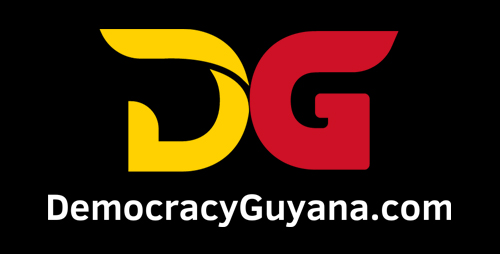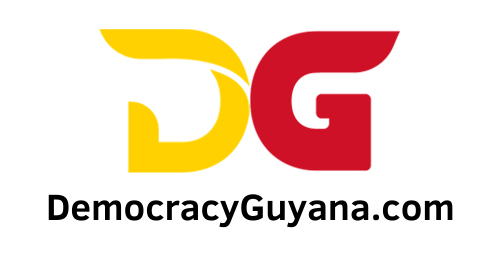The APNU+AFC issued a press statement on February 1, 2025, captioned “Rebuttal to Minister Ashni Singh’s criticism of PNCR’s social programs: to ensure every household has a livable income, the PNCR is prepared to spend as much as it takes”.
This so-called rebuttal can be characterized as one of the most ludicrous rebuttals in the history of budget debates, reinforcing Minister Singh’s contention―that they are clueless, which I had also demonstrated in my recent letter to the editor pertaining to the amended withdrawal formula for the Natural Resource Fund (NRF). Therein, I posited that the degree of the APNU+AFC’s numerical and fiscal contradictions have become an invariably collective norm, morphing itself into an infectious, intellectual paralysis by which they are helplessly plagued. This characterization of the APNU+AFC has been further reinforced in their rebuttal.
They presented no alternative calculations and assumptions of their own, instead, they have adopted Minister Singh’s calculations. Never mind that they have not examined whether those proposed fallacious measures are realistically and fiscally sustainable.
By their own admission, if elected, they will hire experts to perform predictive economic modelling to guide their policies. This inadvertent revelation on their part signals two things: (i) that they are indeed clueless about what they proposing such that their proposals are audaciously fallacious, and (ii) that they do not possess the expertise among themselves, which begs the question: what is the role of their economic czar who advises the Opposition Leader―is their economic advisor admitting he is incompetent? And if not him, what about their touted “shadow minister of finance” in Parliament; is she not competent enough to perform those types of analysis?
Let’s now examine the fiscal sustainability of their proposed audaciously fallacious measures, building on Minister Singh’s analysis:
| Exhibit (a) | PNC’s-COST
G$ Billions |
PPP/C’s Budget 2025 G$ Billions | DIFFERENCE G$ Billions |
| Tax-free Threshold | 34 | 11 | 23 |
| Cash Grant | 120 | 60 | 60 |
| UG | 25 | 19 | 7 |
| Student Stipend | 8 | – | 8 |
| Water subsidies | 11 | – | 11 |
| Student loan reimbursement | 1 | 1 | (0) |
| Free electricity up to $10k/m | 28 | – | 28 |
| Old Age Pension $100k/m | 91 | 35 | 56 |
| Salary Increase | 284 | 147 | 137 |
| Increase in Minimum Wage | 43 | – | 43 |
| CoL measures | 20 | 9 | 11 |
| SBB | 3 | 1 | 2 |
| Development Bank | 50 | – | 50 |
| Rent-to-Own Program | 100 | – | 100 |
| GPL upgrades | 200 | – | 200 |
| Part Time Job Program | 29 | 11 | 18 |
| SUB-TOTAL | 1,047 | 294 | 752 |
| INFRASTRUCTURE BUDGET | 453 | 253 | 200 |
| TOTAL COST | 1,500 | 547 | 952 |
As illustrated in exhibit (a), the APNU+AFC’s proposed measures on social programs alone will cost the budget an additional $752 billion. And, if we are to add an estimated cost to their ring-road and railway promises, since they have not proposed cutting the infrastructure budget, although they said it’s too much; they have instead added onto that more roads and some sort of transportation network in their budget presentations. In the premises, we could add another $200 billion to the infrastructure budget, bringing the total additional cost to $952 billion to budget 2025, if they had their way.
With these adjustments, budget 2025 would have increased from the PPP/C’s $1.4 trillion to $2.3 trillion, representing an increase of 115% over the 2024 budget. Furthermore, to finance the APNU+AFC’s alternative budget, it would have resulted in a budget deficit of $1.2 trillion, instead of the $0.3 trillion deficit, representing 21% of GDP instead of the 5.9% of GDP under the PPP/C’s.
Additionally, to finance the APNU+AFC’s alternative budget, it would have required depletion of the NRF by 100%, given that the withdrawal from the NRF is based on the closing balance in the preceding year. In this instance, the closing balance at the end of 2024 was US$3.1 billion, of which the APNU+AFC would have had to withdraw the full amount instead of the US$2.5 billion under the PPP/C’s budget 2025. Consequently, the debt financing of the budget for the APNU+AFC’s version of the 2025 budget, if they had their way, would have amounted to US$5.6 billion, thereby increasing the total stock of public debt from US$6 billion in 2024 to US$12 billion in 2025, effectively doubling the size of the total public debt, instead of US$7.6 billion based on the PPP/C’s budget 2025, resulting in a debt-to-GDP ratio of over 40%, up from 24%, in just one year.
Suffice it to state, a careful analysis of the APNU+AFC’s policies will show that it will inevitably bankrupt the country in the shortest possible time-frame, especially since in this analysis, I did not even consider oil price volatility. What if oil price fall under US$50 per barrel in 2026 from the current average: This would be fiscally and economically disastrous for the country, and ultimately, the people.
Altogether, this analysis of the APNU+AFC’s alternative budget proposals has demonstrated that their proposals are not fiscally sound and sustainable; by their own admission these are not properly thought out; not grounded in any sort of analysis, and by their own admission; they do not possess the internal expertise to conduct these types of analyses to guide their policy positions. Therefore, one can safely conclude that their alternative proposals are audaciously fallacious, unrealistic and would derive, in reality, the inverse results of a real pro-poor and people-centered budget.





